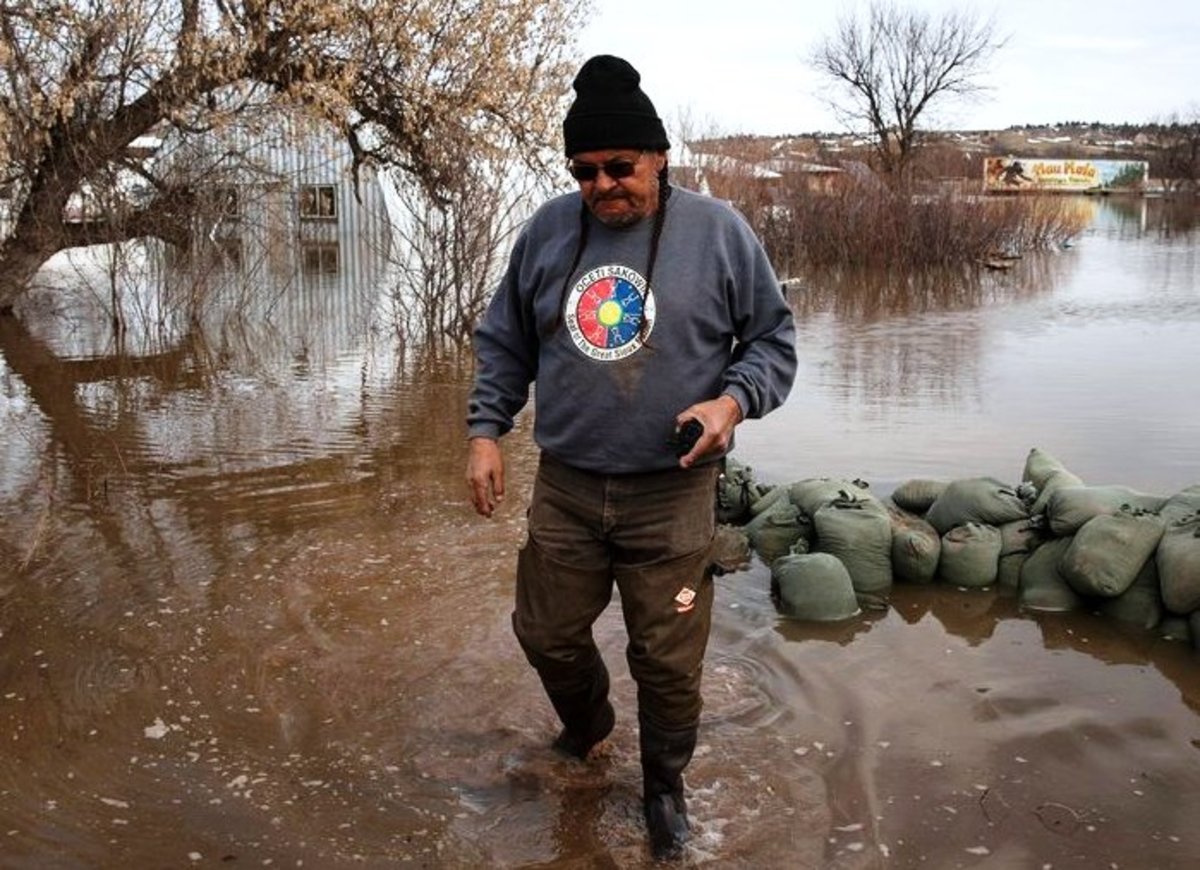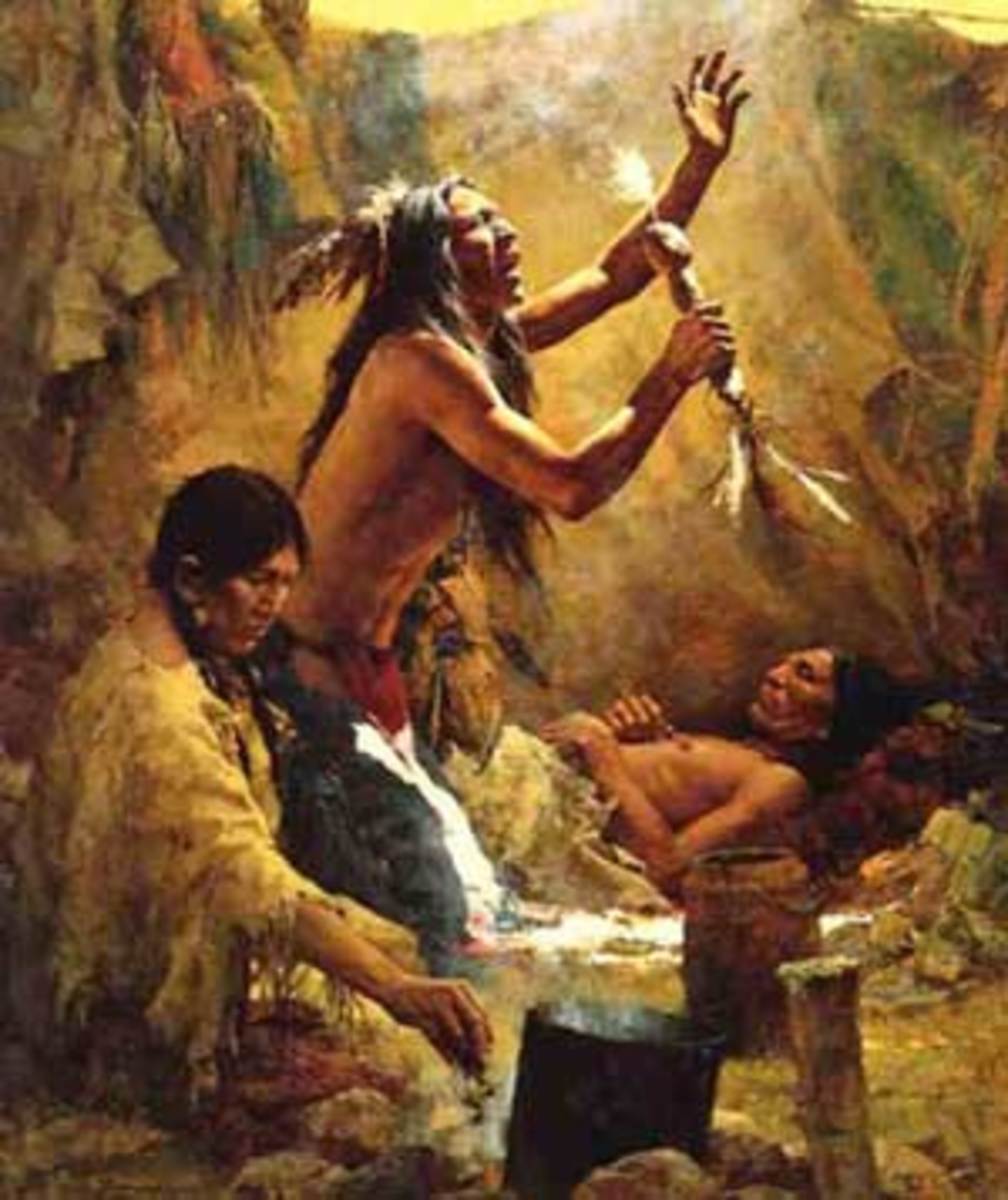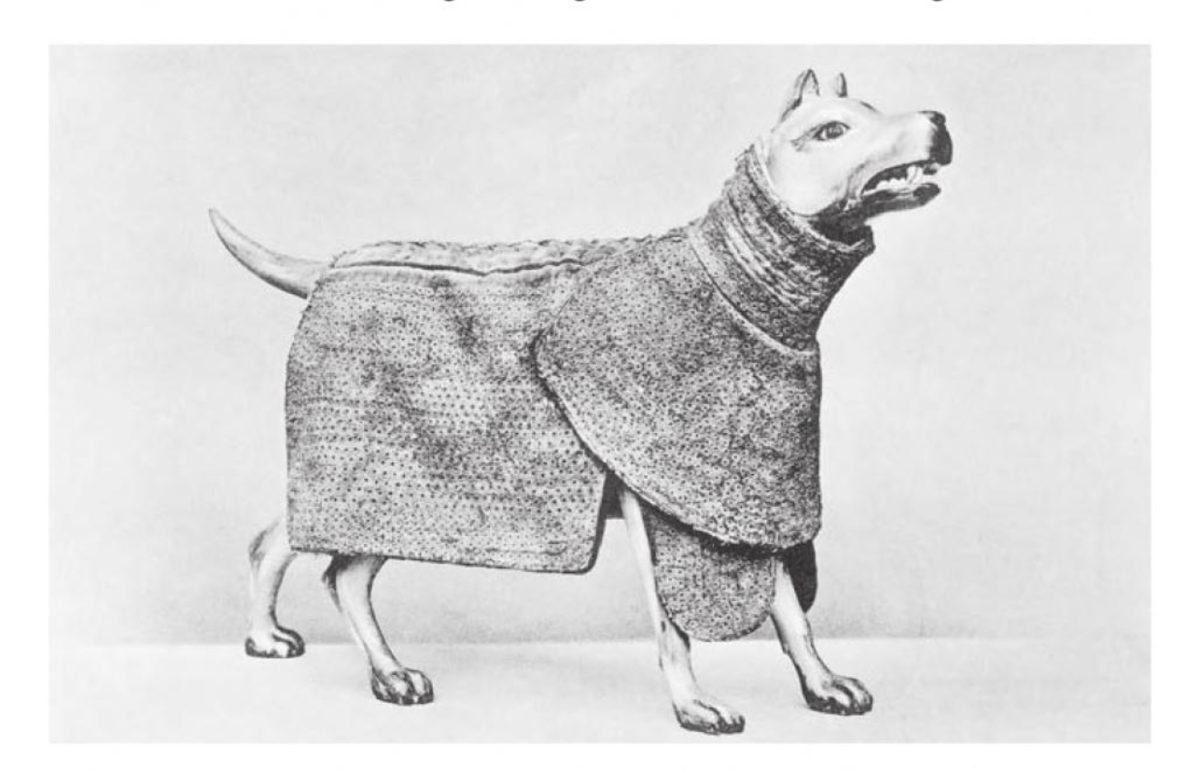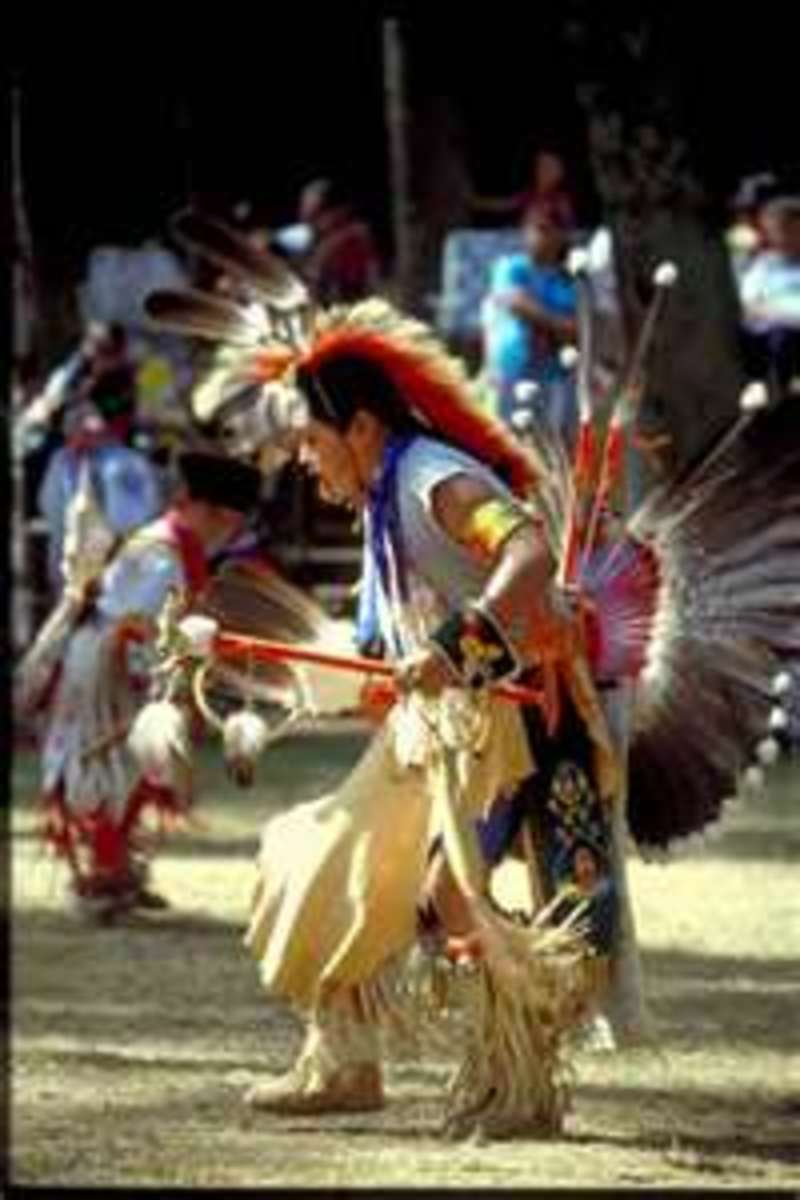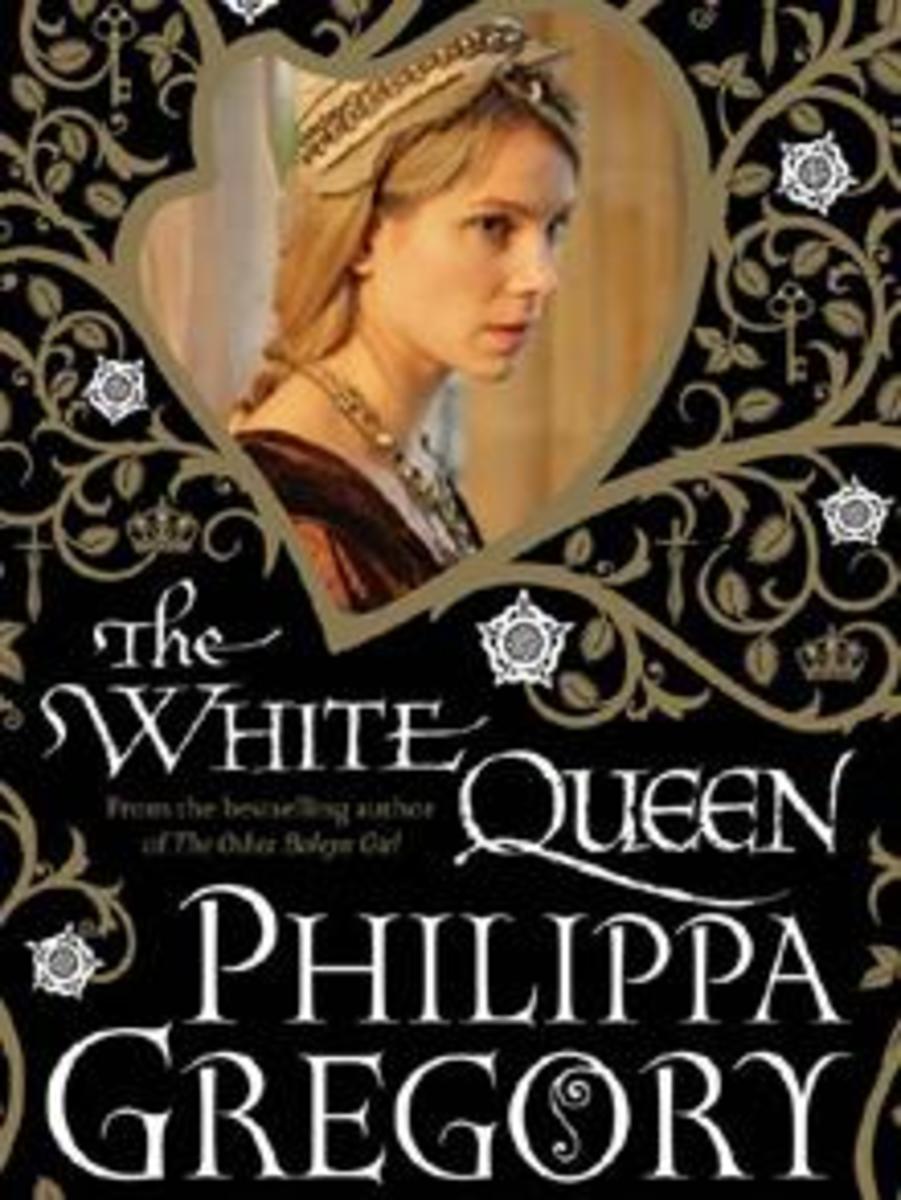Leslie Marmon Silko's Ceremony and The Effects of WWII on Native Americans
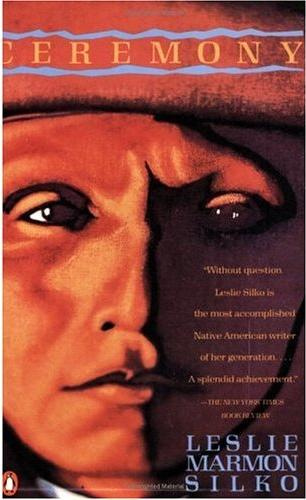
The Effects of World War II on Native Americans
“In spite of years of inefficient and often corrupt bureaucratic management of Indian affairs, Native Americans stood ready to fight the white man’s war” (Morgan). Native Americans across the country saw the outbreak of the war as an opportunity, an opportunity to step up in the world and in their country. Native Americans like those represented by Tayo, the main character in Leslie Marmon Silko’s novel Ceremony, made great contributions to the war effort in World War II that should not be forgotten. Native Americans enlisted in staggering numbers; almost unfathomable percentages of Native Americans registered for the draft and enlistment. However, despite their determination to serve, Native Americans faced many obstacles and difficulties before, during and after the war. Finally, once the war had been won and the soldiers returned home, there were both positive and negative effects in respect to Natives. There can be no arguing Native Americans played a significant part in our victory in World War II. The area where the controversy lies is whether the effects of the war were positive or negative on the Natives.
Starting at the very moment war was declared Native Americans hit the enlistment offices full-force. Although it is true that Native Americans were subject to the draft and selective service (despite their technical non-citizen status), Native Americans actually enlisted more than they were drafted. As can be seen in Ceremony, Native Americans like Tayo’s cousin Rocky were ecstatic, and rushed to the recruiting stations. In fact, according to a 1942 survey 40% more Native Americans enlisted for World War II than were drafted. The Navajo Indians sent 3,600 into service, and 10 percent of the entire Pueblo population entered into service for the war against the Axis powers (Morgan). There was one interesting aspect in Silko’s novel however, that was a mild contradiction with my research. In Ceremony, it was mentioned that Rocky and Tayo were the only ones at the recruiting station. This suggests that others were relatively uninterested, while research suggests there should have been numerous enlisters present, all matching Rocky’s enthusiasm. In fact, Tayo wasn’t even interested in becoming a soldier, he was only went to the recruiting station because Rocky was. The biggest thing Tayo seemed to take away from the recruiting session wasn’t even the fact that he was going to war, but the fact that Rocky had referred to him as his brother, rather than his cousin.
As Native Americans began enlisting they saw the first signs that oppression was still very much present. Many Natives who wanted nothing more than to show their support for the United States and prove themselves were denied for the draft. This was most commonly due to factors such as poverty, illiteracy and health-related issues (Morgan). This oppression was nothing new for the Natives, but it was still very upsetting. The Natives hoped to cast off the oppression with the war, but they quickly saw they were still far from accomplishing that. While some thought themselves defeated, others rose up all the more determined. Navajos had been widely rejected for not speaking English, for example, started taking remedial English classes on the reservation in hopes of qualifying for service (Morgan).
The recruitment and wartime experience as seen by Tayo and Rocky was both similar and different from those Indians discussed in the previous paragraph. The two young men were educated enough, as well as healthy enough, to qualify for service without an issue. As for the discrimination, Tayo says it best. When Harley and some guys push him to tell one of his own war stories, Tayo sums up the sad truth of the Indian experience in the war: “Bars served them booze, old white ladies on the street smiled at them. At Indians, remember that, because that’s all they were. Indians. These Indians fucked white women… These Indians got treated the same as anyone… They had the uniform and they didn’t look different no more. They got respect” (Silko 38). In essence, this is exactly what the Indians had wanted, exactly what they had set out to accomplish. The only problem was that it was all a lie. It was all based around that uniform they wore, and once they were no longer needed to wear it, they lost a lot of the respect they thought they had gained.
The Native Americans fought bravely through the war; however, afterwords there were mixed feelings on the outcome of their bravery. Some, such as Silko, strongly believe that the war had overwhelmingly negative effects on Native Americans. Other authors and researchers are under the opinion that World War II strengthened the relationship between Natives and white people. There are others still, who seemed to have settled in more of a middle ground, where they analyze both the negative and positive effects without taking a particular side of the argument. It is very interesting to look at both sides of this disagreement and weigh the facts and points made by each person with a differing opinion.
Leslie Marmon Silko makes it abundantly clear how she saw the effects of the war. Silko very clearly and very adamantly viewed the involvement of Native Americans in World War II as bringing a purely negative outcome. Silko certainly has good points as well as good reasoning in her argument. The biggest factor seen in Ceremony supporting this is the very real presence of PTSD (Post-Traumatic Stress Disorder). Tayo is quite obviously scarred by his experience in the war. Tayo recalls an experience where he thought one of the Japanese soldiers they were executing was Josiah, his beloved Uncle. He also is often haunted by the memory of losing Rocky during a death march with his fellow prisoners. These are just two examples of the terrible effects of Post-Traumatic Stress Disorder in relation to Tayo. One thing to consider though is that PTSD wasn’t exclusively found in Native Americans, but in soldiers of all races and cultures returning from the war.
Silko also did not seem to believe the war had increased the position of Indians in the country. The beginning of her book did not emphasize so much the determination of Native Americans at the beginning of the war to use it as an opportunity for social advancement, but she definitely touches the subject of Native American’s “place” in society. Silko describes through Tayo what the Indian soldiers became after the war: “Don’t lie. You knew right away. The war was over, the uniform was gone. All of a sudden that man at the store waits on you last, makes you wait until all the white people bought what they wanted. And the white lady at the bus depot, she’s real careful now not to touch your hand when she counts out your change” (Silko 39). Post-war Native American soldiers who saw this as their new life often tried to drown the sorrow and depression in alcohol. “Servicemen went to bars or drank in order to bond with their fellow soldiers” (Franco 197). However it seemed to be more than just bonding, it was reminiscing of a better time when they were considered equals. In fact, Tayo even went as far as to say this heavy repression-based drinking had been going on for even longer than since the war. In the hospital, a doctor said to Tayo: “Reports note that since the Second World War, a pattern of Drinking and violence, not previously seen before, is emerging among Indian veterans.” Tayo responded “It’s more than that. I can feel it. It’s been going on for a long time”. In a sense, Silko contradicts a theme that had suggested World War II was the cause of the depression by putting in this quote; here Silko indicates that the war was only part of the depression, and that in reality it had been around much longer. Personally, I find the second point to be more plausible in that the oppression had been around for a very long time before the war.
Through other research, differing opinions on the effects can be found. World War II was a turning point for both whites and Indians, however in different ways. Whites, for example, commonly believed that World War II signified the successful integration of Indians into mainstream society. In his book Crossing the Pond: The Native American Effort In World War II Jere Franco quoted a man who said “Indians can fight and work like everyone else and, therefore, should join the mainstream of society and live like everyone else”(Franco 206). Ideas like these are what contributed so heavily to the effort to assimilate Native Americans. In all truth, there could be no denying the simple fact that military service as well as the wartime economy, which attracted many Indians to the cities for work, had been exposed (often for the first time) to the non-Indian world. This idea off-reservation society both attracted and repelled Natives. The Natives saw potential for a higher standard of living, better education, health care, and career opportunities. The deterring factor was a widespread fear of lessening tribal influence. The outcome of the experience off reservation, however, was most commonly a nice middle ground. Many Native Americans today have found a healthy balance between the two cultures; these Natives have mastered thriving in mainstream American society without forgetting their Native heritage, practices, and values.
Native Americans played a very influential role in World War II, and World War II was very influential on Native Americans in return. Native Americans saw the war as an opportunity to prove to the white men that they too wanted to protect America, and therefore they deserved more equivalent treatment. Unfortunately, despite they’re good intentions, they were still subject too much discrimination and racism. Still the Indians served as soldiers all the same, and they found themselves treated as soldiers. They got a taste of what it was like to be more than what society had limited them too. Perhaps that taste is what they needed, and what the rest of America needed as well. World War II left many Native Americans back where they started, but now they knew what it was like to be an equal, and they knew what society was like off the reservation. World War II had both positive and negative effects on Native Americans, but overall it contributed to a step up for Natives in America.
Bibliography
Franco, Jere B.Crossing the Pond : The Native American Effort in World War II. College Station, TX: University of North Texas Press, 1999. eBook.
Jevec, Adam. "Prologue Magazine."Prologue Magazine. 33.4 (2001): 270-277. Web. 25 Oct. 2012.
Morgan, Thomas D.. "Native Americans In World War II."Sam Houston State University. N.p.. Web. 5 Nov 2012. <http://www.shsu.edu/~his_ncp/NAWWII.html>.
Silko, Leslie Marmon.Ceremony. New York: Penguin Group, 1977. Print.

